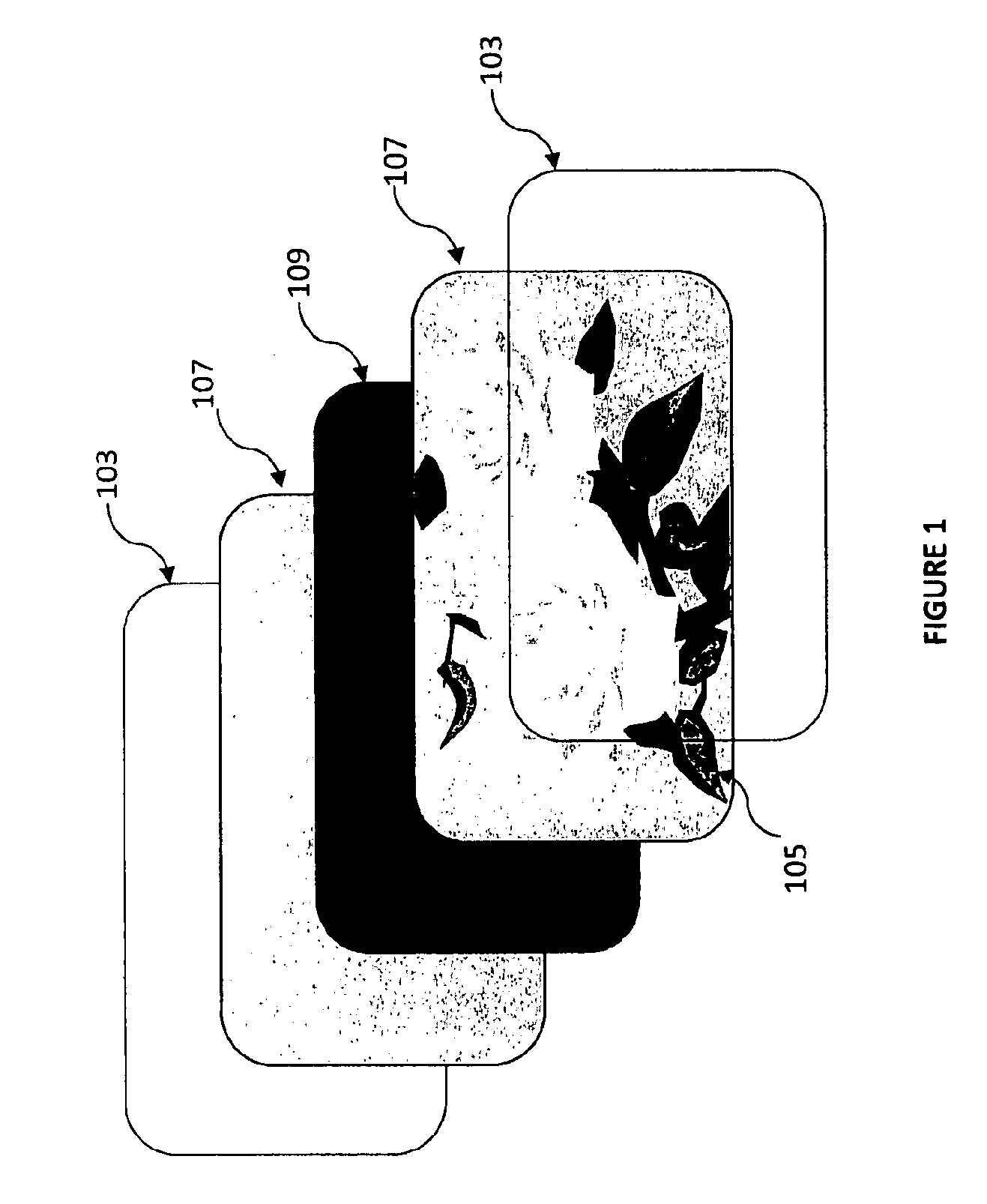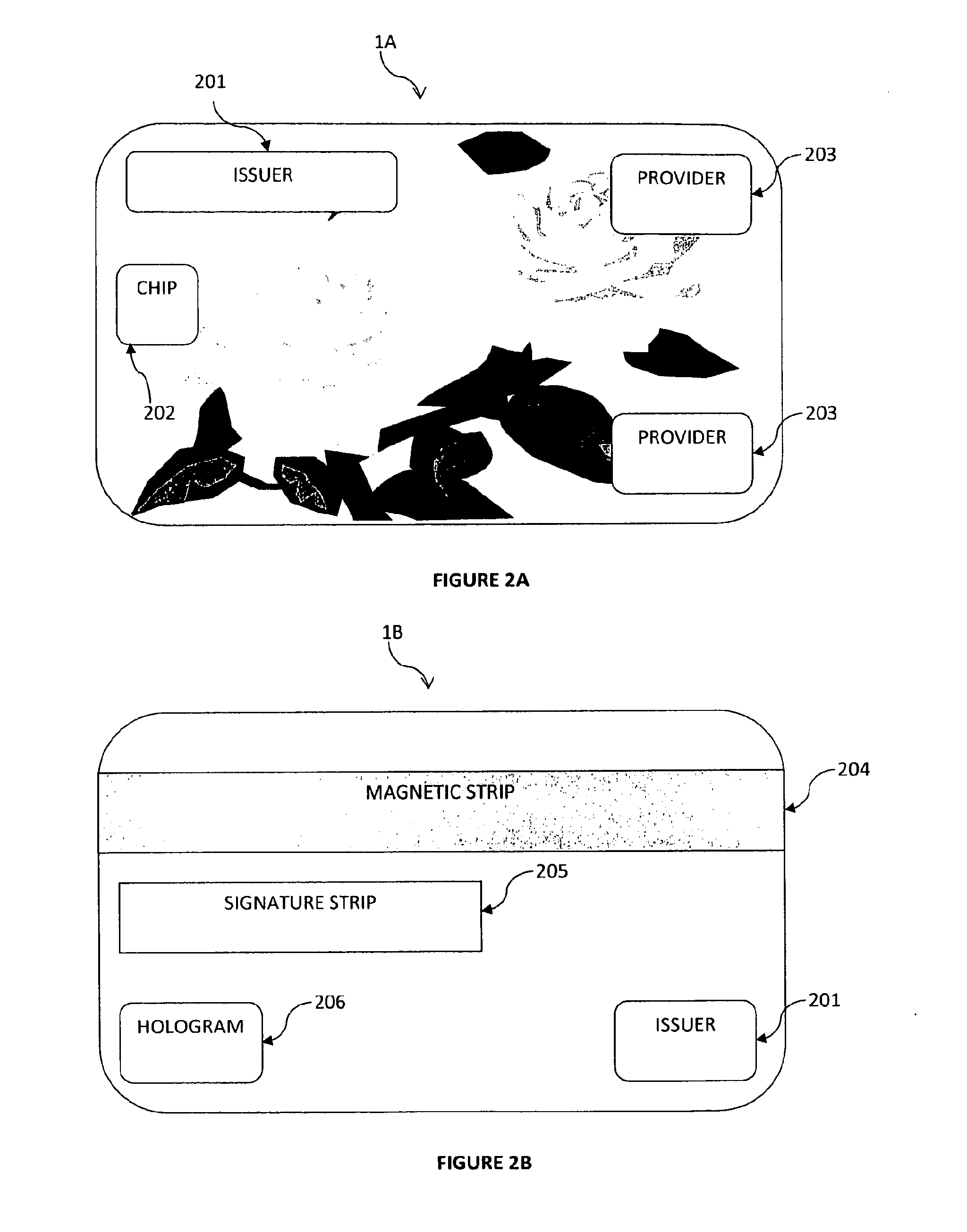Card printing method and apparatus
- Summary
- Abstract
- Description
- Claims
- Application Information
AI Technical Summary
Benefits of technology
Problems solved by technology
Method used
Image
Examples
Embodiment Construction
[0051]In a first step, a card designer and / or customer generates a card design to be applied to a personalised card by selecting elements and / or the location of those elements on the front and / or back of the card, and submits an order for the personalised card. An image to be applied to the card may also be selected.
[0052]This order is communicated to a card producer, where a plurality of different cards are manufactured, such that card elements that are common to two or more of the different cards may be identified and applied in a batch process, as described in more detail below.
[0053]Finally, in the case of a card carrying confidential data, such as a credit or debit card, this data is applied to the card and the card is issued to the user.
Generating and Ordering a Card Design
[0054]A design to be applied to a card may be generated and ordered using a system that enables a user to select elements to be applied to the front and / or back of the card.
[0055]This may be advantageously d...
PUM
 Login to View More
Login to View More Abstract
Description
Claims
Application Information
 Login to View More
Login to View More - R&D
- Intellectual Property
- Life Sciences
- Materials
- Tech Scout
- Unparalleled Data Quality
- Higher Quality Content
- 60% Fewer Hallucinations
Browse by: Latest US Patents, China's latest patents, Technical Efficacy Thesaurus, Application Domain, Technology Topic, Popular Technical Reports.
© 2025 PatSnap. All rights reserved.Legal|Privacy policy|Modern Slavery Act Transparency Statement|Sitemap|About US| Contact US: help@patsnap.com



